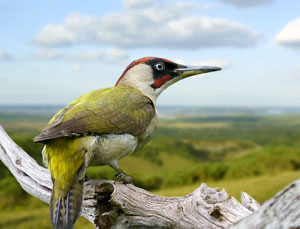
The Sika Deer: A Majestic Intruder in British Woodlands
The Sika deer (Cervus nippon) is a compelling and mysterious species that has established itself as both a symbol of natural beauty and a subject of conservation attention These animals now grace many of the UK’s woods and wild landscapes. We explore the interesting world of the Sika deer in this article, learning about their history, traits, habitat, behaviour, and place in the British ecology.
Origins and Introduction:
The Sika deer is a native of East Asia, and it may be found there naturally in places like Russia and Japan. But they were first introduced to the UK in the middle of the 19th century thanks to their versatility and appeal. Sika deer were first used as attractions in parks and estates, but over time they managed to escape and establish wild populations, mostly in Scotland, England, and Northern Ireland.
Physical Characteristics:
The stunning colour diversity of the Sika deer’s coat further adds to their allure. Their fur, which ranges in colour from reddish-brown to dark brown, has noticeable white patches in the summer and frequently fades to a more uniform greyish-brown in the winter. Another distinguishing characteristic is their diminutive size in comparison to other deer species, with adults typically standing between two and five feet tall at the shoulder.

Habitat and Range:
Sika deer have a flexible choice for habitat, thriving in a range of settings including dense forests and moorlands as well as grassy hillsides and heathlands. Due to their versatility, they have been able to thrive in a variety of environments across the UK, with particularly robust populations in Scotland, the Lake District, and some areas of Wales.
Behaviour and Reproduction:
The sika deer are renowned for their elusive nature and frequently choose to hide out in woodlands. Since they are mostly nocturnal or crepuscular, seeing them is a rare treat for wildlife aficionados. Male Sika deer compete for the attention of females by putting on theatrical vocalisations and displays during the rutting season, which usually lasts from September to November. The prize is the right to mate with a harem of ladies for the winner.
Ecological Impact:
The ecological effects of Sika deer on local flora and fauna have been discussed in relation to their presence in the UK. They have a reputation for grazing on vegetation, which could have an effect on native plant species and change the structure of the forest. To avoid overgrazing and maintain the delicate balance of ecosystems, Sika deer populations are being managed in some locations.
Conservation Concerns:
Sika deer are not classified an endangered species globally, but because of potential interactions with local species and habitat alteration, conservationists and ecologists regularly monitor their abundance in the UK. Some conservation efforts try to balance the need to protect natural habitats with the need to acknowledge the existence of Sika deer.
Enjoying the Presence of Sika Deer:
Observing Sika deer in their natural setting provides a singular opportunity for nature lovers to interact with the unspoiled beauty of the UK. Observing wildlife responsibly and with utmost respect for the creatures and their surroundings can be a truly memorable experience.
The Sika deer is a living example of the complex interactions between imported species and native habitats, as well as the changing character of ecosystems. Its presence in the UK gives us the chance to consider the difficult balance between preservation and coexistence and serves as a reminder that we must carefully maintain our natural landscapes to ensure their viability for future generations.





